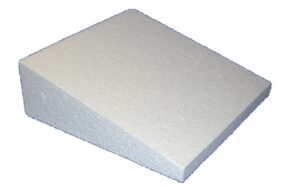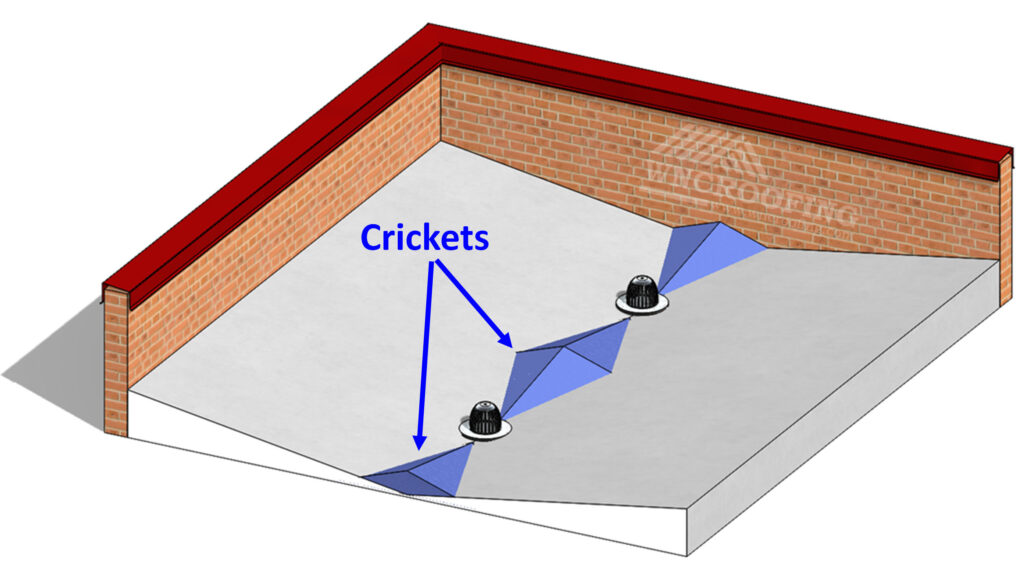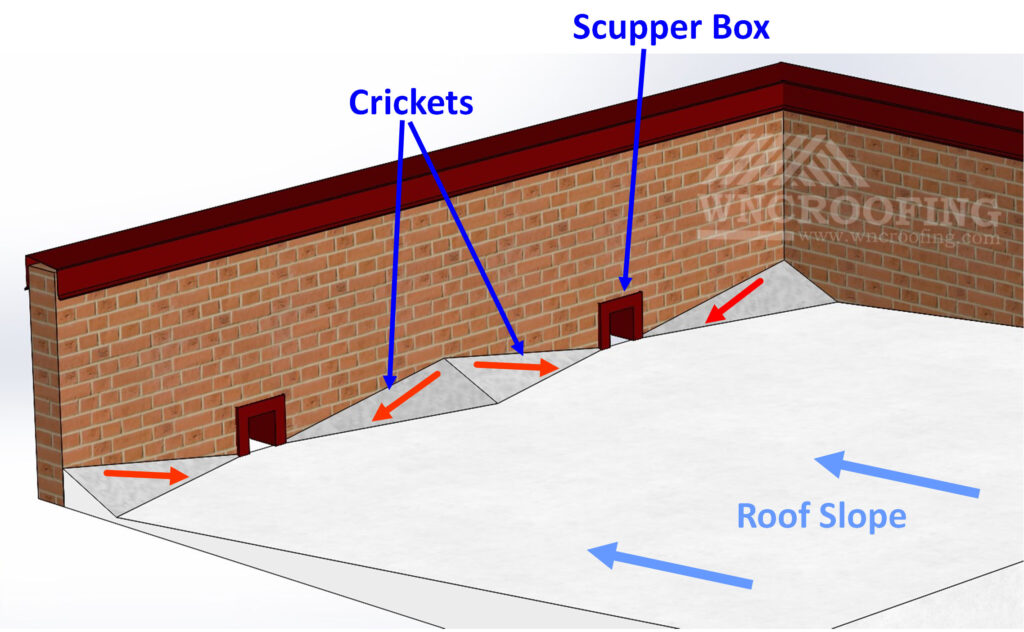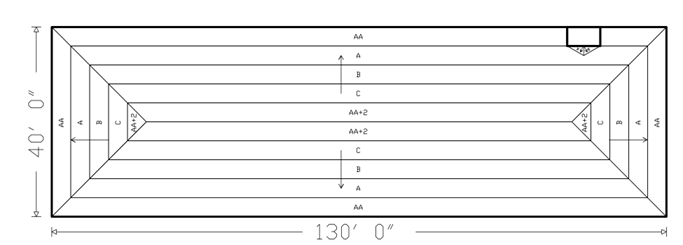How to Use Tapered insulation and Crickets
To Maximize the Life of Your Roof
This is the second part of our information on ponding water on flat, commercial roofs and solutions to remedy this. If you haven’t already, check out our article on How and Why Ponding Water Damages Membrane Roofs.
Options and Remedies:
If standing water is a concern there are two options:
- Switch to a different material such as a Black EPDM rubber membrane which is not adversely affected by standing water.
- This is often the most economical solution for older buildings with completely flat roofs.
- For new construction building codes require a minimum slope of ¼” per foot.
- Add slope to eliminate low areas or flat areas where water would pond.
- Special Rigid insulation boards with built in slope are available for this purpose.



Tapered insulation panels are typically made out of rigid foam called polyisocyanurate or a white EPS foam that is similar to Styrofoam.
Crickets
For roofs with slope in the structure the addition of crickets in key locations will typically remedy problem areas.
- Curbs: Tapered crickets should be installed upslope of all curbs & HVAC units.
- This prevents ponding water and membrane deterioration.
- Eventually when the membrane is past its useful service leaks will begin to occur. Flat areas in front of curbs are typically the first places leaks appear.
Right

Wrong
Curb without a cricket: Failure on the uphill side of the curb where ponding occurred.
- DRAINS: Crickets should be installed between roof drains.

Right

Saddles properly installed between drains to prevent ponding in the valley.
Wrong

A 2-year old roof with water ponding in the valleys.
Right

Crickets properly installed between scuppers
Wrong
Full Tapered Insulation Package
Slope can be added to flat roofs by installing in an engineered taper system above the roof deck.
- Benefits: The system usually adds a significant amount of additional insulation and R-value.
- Costs: Adding a tapered insulation system will add significant costs to the project, likely 25% to 60%. A system with a slope 1/8” per ft will be more cost effective that a 1/4” system and will perform acceptably in most applications.

Pyramid Shaped Taper Plan where roof is sloped from the center towards the gutters around the perimeter.

3D image of a taper system that slopes toward drains in the center of the roof.
(Opposite of the pyramid taper plan above)
Conclusion
In conclusion, If your roof has standing water issues and your looking to replace your roof, then now could be a great time to consult a commercial roofer on the best options for your roof. Crickets and tapered insulation can add cost to your roof install, but the added benefit of a roof that is built to last and won’t disrupt your business will provide a peace of mind that you can’t put a price tag on.
Learn more about roof crickets here and scuppers here.





